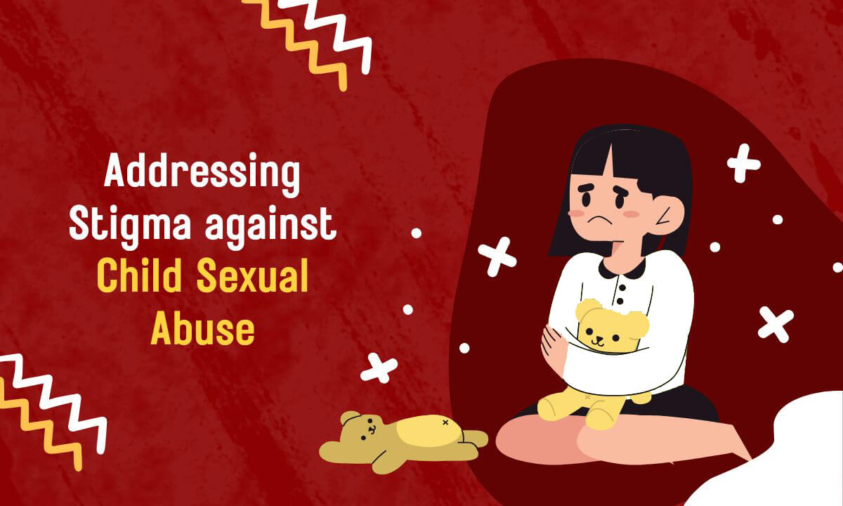Learn how stigma around child sexual abuse silences victims and protects abusers. Discover ways families, schools, and society can break this cycle.
INTRODUCTION
Child sexual abuse is a painful reality, but even more damaging than the act itself is the silence that surrounds it. In India and many parts of the world, child sexual abuse remains deeply stigmatized—not just for the survivor, but also for their family. This stigma discourages reporting, emboldens perpetrators, and leaves children vulnerable to repeated harm.
While laws like the Protection of Children from Sexual Offences (POCSO) Act exist to ensure justice, stigma is the invisible barrier that stops many cases from ever being reported. This blog explores the root causes of this stigma and how we can collectively dismantle it.
Why Stigma Exists: Myths and Misinformation
The stigma around child sexual abuse is built on a foundation of myths, fear, and cultural taboos. Common misconceptions include:
- “Children often make up stories.”
- “Good families don’t have such problems.”
- “It will bring shame to the family.”
These beliefs shift the blame from abusers to survivors, turning victims into silent sufferers. According to a study by the Ministry of Women and Child Development, over 50% of Indian children have faced some form of sexual abuse—yet only a fraction of cases is ever reported.
The Price of Silence
The consequences of stigma are devastating:
- Children remain in abusive situations due to fear of not being believed.
- Families avoid legal action to protect their social standing.
- Survivors suffer long-term psychological trauma, including guilt, anxiety, depression, and suicidal ideation.
In some cases, entire communities rally to protect the accused, especially if the perpetrator holds power or status. This further isolates the victim and normalizes impunity.
The Role of Families: Believe, Don’t Blame
The family’s response can either break the cycle or reinforce it. Instead of asking:
- “What were you doing?”
- “Why didn’t you speak up earlier?”
Families should say:
- “I believe you.”
- “It’s not your fault.”
- “We will get through this together.”
There are also several resources that offer actionable steps for parents and guardians to create safe spaces for disclosure and healing.
Schools and Teachers: Safe Spaces, Not Scary Ones
Many disclosures of abuse happen at school. Teachers and school staff must be trained to:
- Recognize signs of abuse (withdrawal, fear, sudden aggression).
- Report incidents to authorities and Childline 1098.
- Avoid punishment or disbelief when a child opens up.
Schools should conduct regular body safety workshops, host open forums, and ensure students know who to turn to if something feels wrong. Silence in classrooms leads to silence in courtrooms.
The Media and Public Discourse
Mainstream and social media can either challenge or amplify stigma. Irresponsible reporting, victim identification, and moral judgment can retraumatize survivors. Instead:
- Use sensitive language: “survivor” instead of “victim”, “alleged” instead of accusatory labels.
- Avoid publishing the survivor’s identity.
- Focus on systemic issues and solutions, not just the sensational aspects of the case.
Journalists can refer to The Editors Guild of India’s Guidelines for ethical reporting on child abuse cases.
Cultural Taboos and the Need for Conversation
In many communities, discussing sexual abuse is still taboo. But not talking about it does not protect children, it protects abusers. Community leaders, religious figures, and local influencers must:
- Speak openly about child safety.
- Encourage reporting and support.
- Reinforce that shame belongs to the abuser, not the child.
Initiatives like The Red Elephant Foundation and Breakthrough India are working to break these taboos through storytelling, digital campaigns, and grassroots training.
Creating a Culture of Consent and Protection
Stigma will truly dissolve when society begins to see child safety as a shared responsibility, not a shameful secret. We must:
- Normalize conversations about consent and body autonomy from a young age.
- Treat disclosures with respect and confidentiality.
- Understand that the true disgrace lies not in the act, but in the silence that follows.
For instance, Google’s Be Internet Awesome includes tools to help children learn digital safety and when to say “No”.
CONCLUSION
Erasing stigma is not a legal process, it’s a social and emotional revolution. It begins when ONE TEACHER BELIEVES a student, when ONE PARENT LISTENS without judgment, when ONE COMMUNITY STOPS WHISPERING and starts speaking out.
“Justice begins with belief. Protection begins with conversation.”
In case you are looking for customized child safety training, POCSO-related training, or POCSO advisory services, please feel free to reach out to us at +919004521614 or [email protected].
Authored by Tanvi Ojha, Content Writer Intern


 Cart is empty
Cart is empty 
